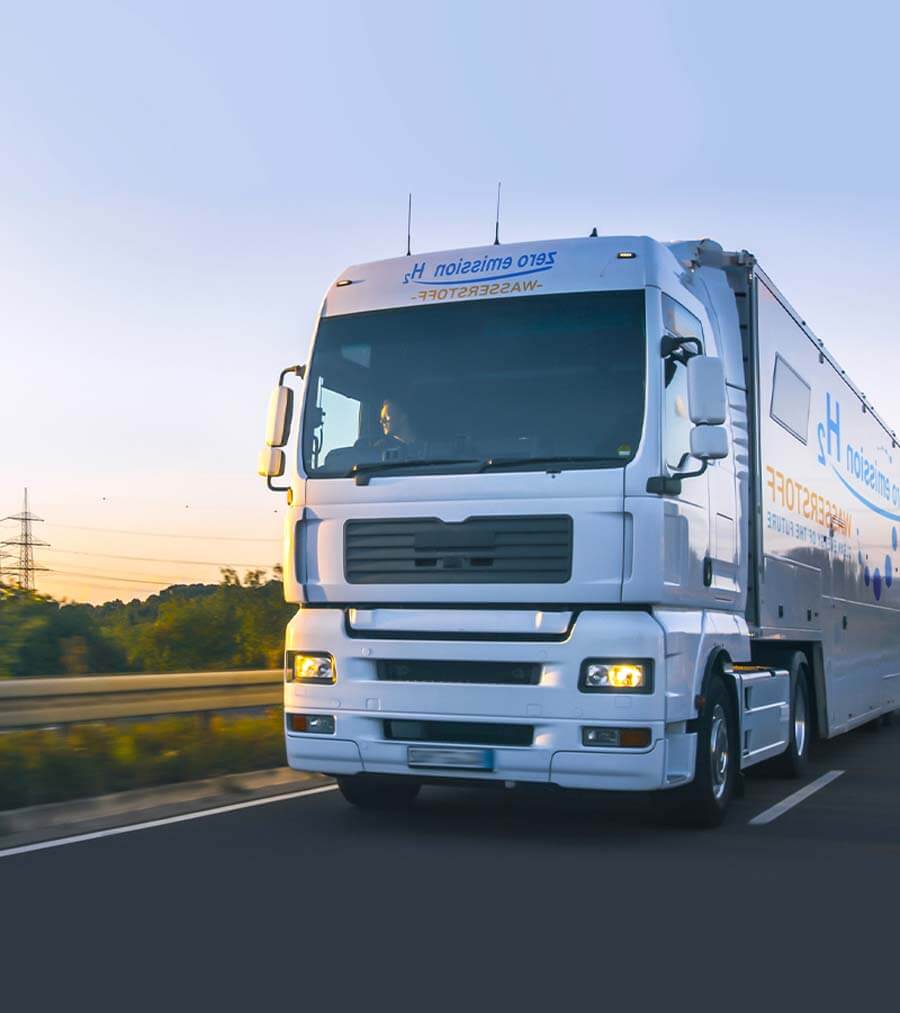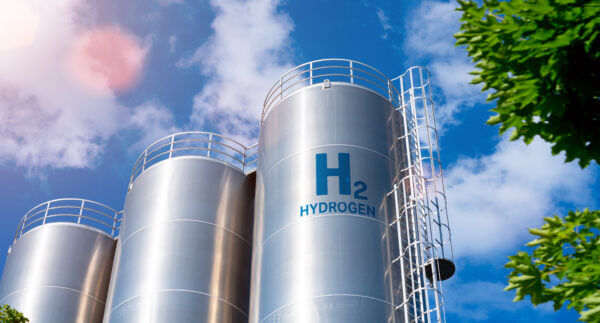Our Work
Zero-Carbon Fuels
80% of global final energy demand is currently served by high-emitting fuels. Zero-carbon substitutes will be key to full decarbonization.
Despite critical efforts to expand electrification, some projections suggest that fuels could still serve one quarter of final energy demand by midcentury. Marine shipping, heavy-duty trucking, high-temperature industrial process heating, ironmaking, long-duration energy storage, and aviation are particularly difficult to electrify and will need cost-effective zero-carbon fuels.

The latest in zero-carbon fuels
Sign up today to receive the latest content from CATF experts.
Our Goal
Accelerate the development and deployment of zero-carbon fuels
Acknowledging the likely long-term role of fuels, CATF aims to accelerate the development and deployment of zero-carbon substitutes like hydrogen and ammonia to reduce emissions in time to achieve the Paris Agreement’s midcentury goals. These fuels have the potential to reduce costs for decarbonizing hard-to-electrify sectors and could unlock additional opportunities for future decarbonization across the wider global energy system.
Why do we focus on zero-carbon fuels?
Learn more about zero-carbon fuels and how we’re engaging with technology developers, customers, and policymakers to accelerate and streamline the development and deployment of these solutions.
Climate Beneficial Hydrogen HubS
Hydrogen Hubs
A hydrogen hub is a regional network consisting of the production, end-use, and connective infrastructure needed to produce, transport, store, and use clean hydrogen in a functional regional market.
Learn more about CATF’s work implementing climate and community beneficial clean hydrogen hubs.
Resources for Hydrogen Production
Hydrogen Production Calculator
This tool gives a better understanding of the material requirements to produce low-emissions hydrogen, either through a low-carbon or renewable energy process. The tool allows you to input the amount of hydrogen or ammonia you’re looking to produce using both methods, and then calculates the quantities of natural gas, water, and electricity required, as well as the by-products of these processes.
lifecycle Emissions of Hydrogen
Hydrogen Delivered Lifecycle Analysis Tool
Zero-carbon fuels like hydrogen can play a major role in replacing fossil fuels, but in order to be climate beneficial, it is important to evaluate hydrogen production across its full lifecycle — assessing emissions from all stages of production. This tool analyzes the full lifecycle emissions of hydrogen from production to transportation.
Our impact in zero-carbon fuels
Scope of Work
Cross-sectoral:
CATF has identified six sectors that are especially challenging to decarbonize, and for which zero-carbon fuels could be particularly advantageous: Marine shipping, heavy-duty long-haul trucking, ironmaking, high-temperature industrial process heating, aviation, and long-duration energy storage. In addition, building heating in very cold climates may be especially difficult to fully electrify due to peak grid loads, and other sectors of transport like offroad vehicles may not be fully decarbonized through electrification by 2050.
CATF is executing on its comprehensive, multi-faceted approach within each of these sectors with rigorous analysis, public policy design, public education and advocacy, identification of needed innovation initiatives, and promotion of demonstration projects such as hydrogen hubs.
International:
The zero-carbon fuels focus at CATF is inherently global — in line with the nature of fuels themselves and the industries involved. Our global scope also matches the cross-jurisdictional nature of the decarbonization challenge. CATF is pushing for hydrogen hubs to decarbonize industry in both the United States and the European Union, with additional work in Asia and the Pacific Rim, the Middle East, and North Africa.
Achievements
In 2018, CATF reinvigorated interest in zero-carbon fuels with the release of an important report, Fuels Without Carbon, Prospects and the Pathway Forward for Zero-Carbon Hydrogen and Ammonia Fuels. The report explores how scaling-up the production and use of zero-carbon hydrogen and ammonia might help decarbonize segments of the power sector, industrial sector, and transportation sector. It had a major impact and helped put zero-carbon fuels on the map as a critical tool in the decarbonization toolkit.
CATF has promoted awareness of the role for ZCF in heavy transportation, including shipping and trucking and has developed policy proposals for these sectors as part of our Transportation Decarbonization Program. This work has included expert convening, white papers and reports on technology, infrastructure, and policy, and Congressional testimony.
As a convenor of the Carbon-Free Technology Initiative, CATF worked with U.S. electric utilities and other NGOs on a suite of federal policy proposals designed to ensure the commercial availability of affordable, carbon-free, 24/7 power technology options by the early 2030s in support of net-zero carbon reduction commitments in the U.S. This work included an emphasis on research, development, and demonstration for hydrogen technologies, hydrogen infrastructure development, and development of hydrogen hubs.
CATF has worked behind the scenes to educate NGOs, lawmakers, and industry leaders on the importance of preserving optionality in pathways toward the decarbonization effort — and the urgent need to develop zero-carbon fuels now so that we can make use of those options in the future. We conduct stakeholder education, produce regular thought leadership on the potential for zero-carbon fuels to decarbonize hard-to-electrify sectors, and have been energetic advocates for pragmatic approaches to scaling carbon free technology. Our efforts have resulted in the inclusion of support for zero-carbon fuels and hydrogen hubs in key pieces of policy in both the U.S. and Europe.
In Europe, CATF advocated for the inclusion of legally binding requirements for the development of zero-carbon fuels refueling infrastructure in the Alternative Fuels Infrastructure Directive (AFID) revision. Additionally, CATF also called for the legislation to become a regulation (instead of a directive) to ensure immediate implementation after adoption. In July 2021, the revised legislation proposal was released. It included binding requirements for refueling infrastructure and is now a regulation.
CATF is engaged in Fit for 55, Europe’s climate policy overhaul, to promote the adoption of a technology optionality approach in the revised legislations, including the revision of the Gas Regulation and Directive, which will regulate the nascent ZCF gas market in Europe. Other CATF priorities include supply -side technology policies and infrastructure development both at EU and Member State level.
Challenges
The key challenges for zero-carbon fuels are costs and markets. Costs are currently too high to compete with incumbent high-emitting fuels without public policy support, and reductions in costs will require large-scale deployment through markets that recognize the greenhouse gas benefits of these fuels. The solution to this chicken-and-egg problem involves research and development to improve performance and reduce costs, demonstration projects for both production and end use, and market structures such as production incentives that expand deployment into a wider array of sectors. Development of connective infrastructure will need to anticipate expanding market demand to avoid supply bottlenecks. There is a public policy role in each of these solutions.
Related resources
Meet our experts working in
zero-carbon fuels
-

Sam Bailey
Regional Hubs Manager, Appalachia -

Alex Carr
Europe Policy Manager, Zero-Carbon Fuels -

Ian Champ
Regional Hubs Manager, Midwest -

Maggie Field
Regional Hubs Manager, West -

Hagan Han
Senior Policy Associate, Zero-Carbon Fuels -

Matthew Holland
Regional Hubs Manager, Gulf Coast -

Emily Kent
U.S. Director, Zero-Carbon Fuels -

Jonathan Lewis
Director of Transportation Decarbonization -

Rachel Starr
U.S. Policy Manager, Zero-Carbon Fuels and Transportation Decarbonization -

Ghassan Wakim
Production and Export Director, Zero-Carbon Fuels -

Thomas Walker
Transportation Technology Manager

















